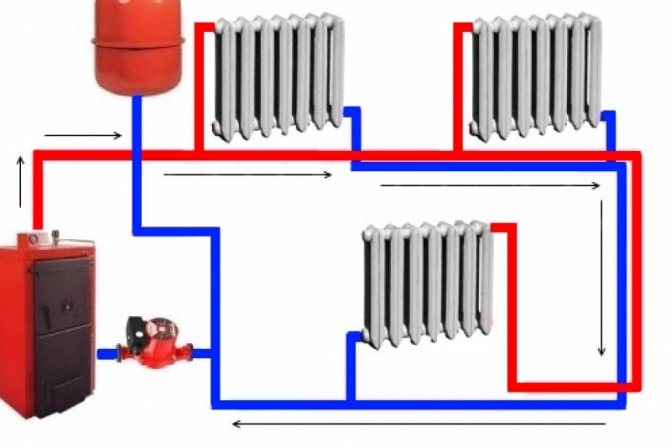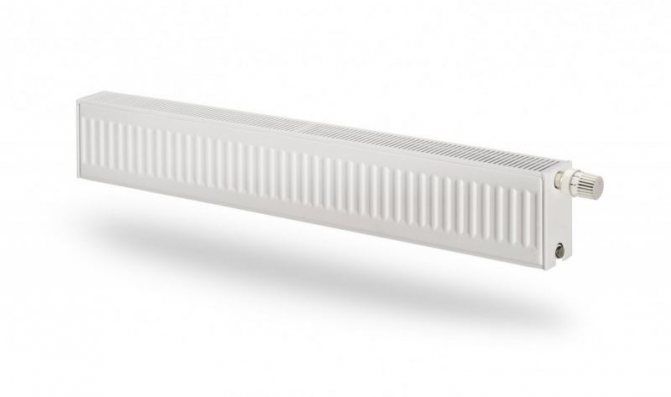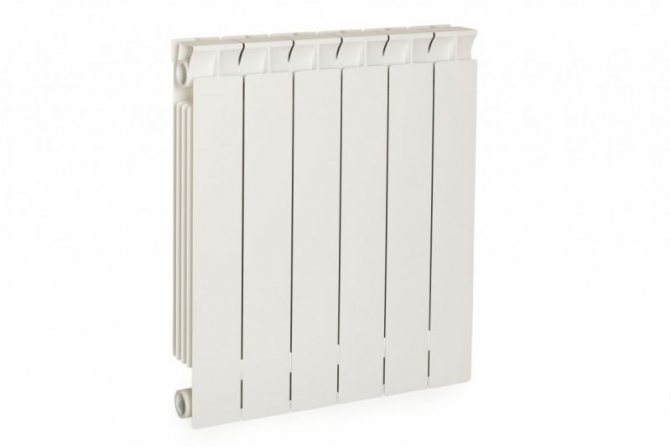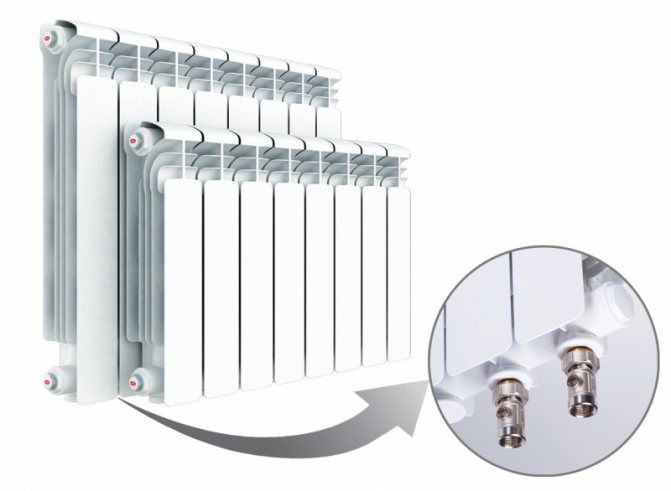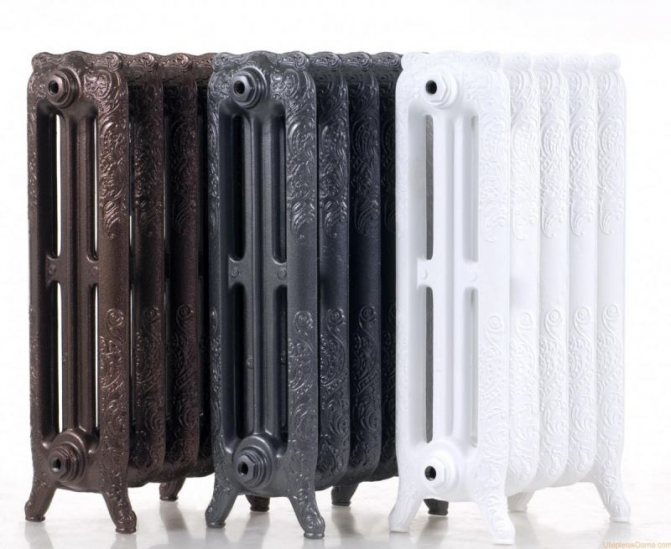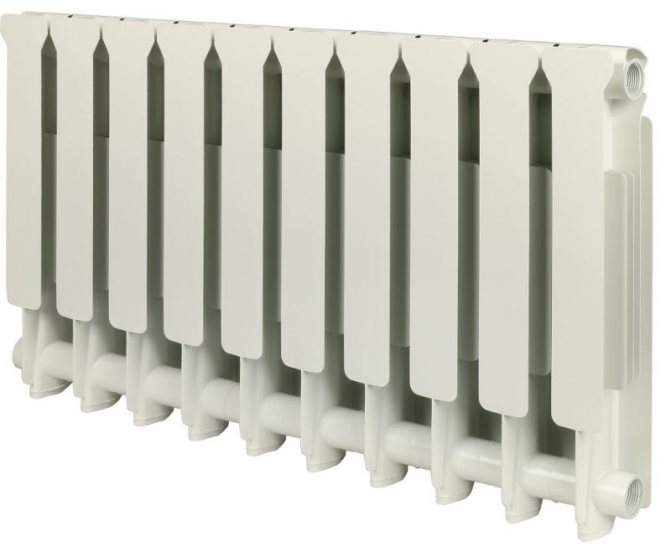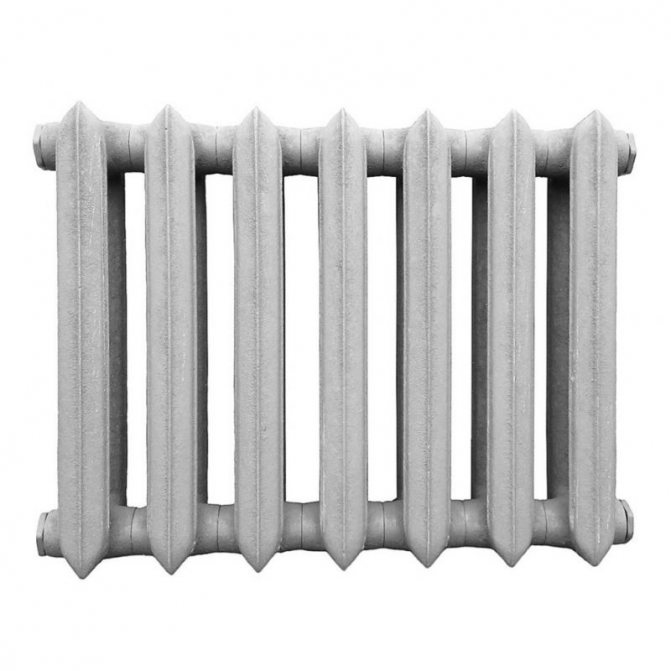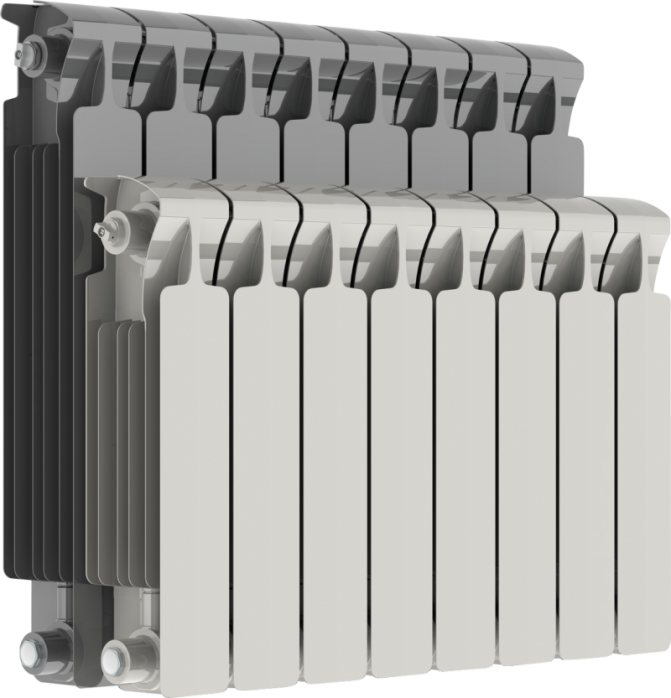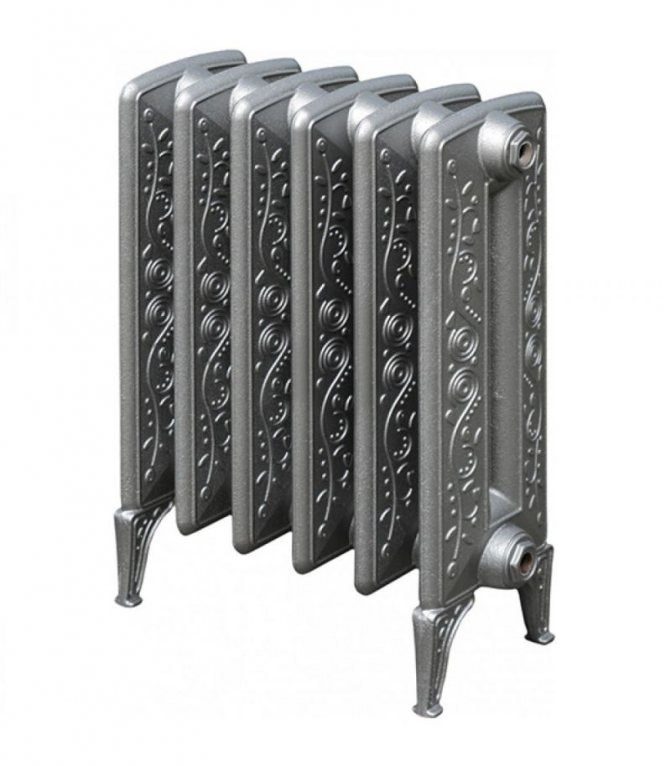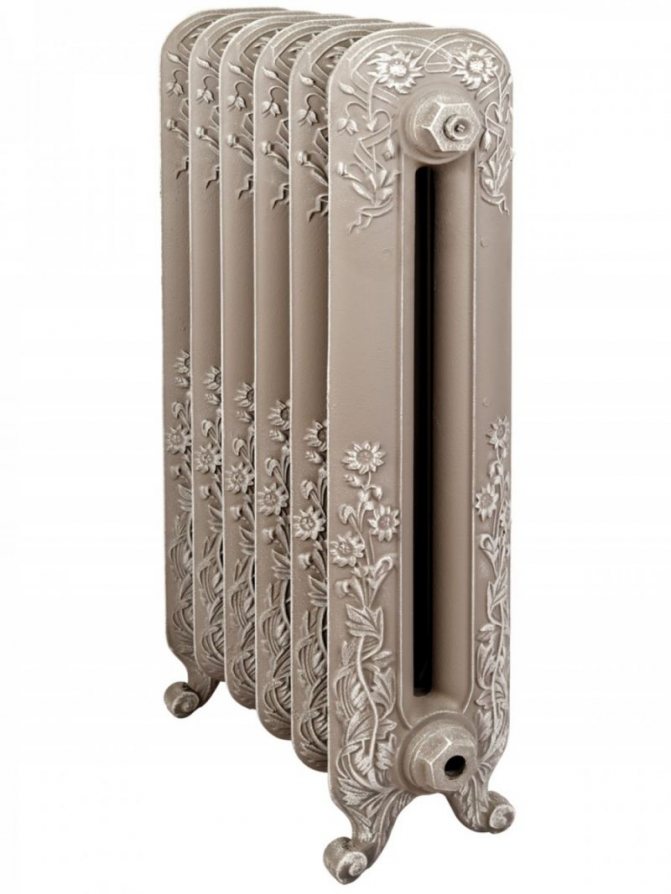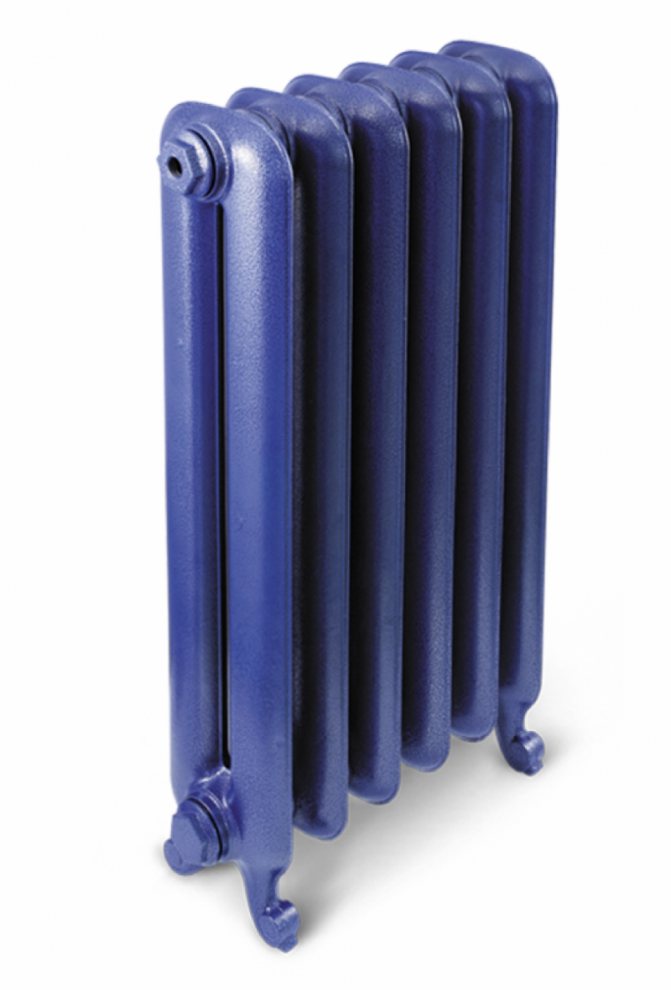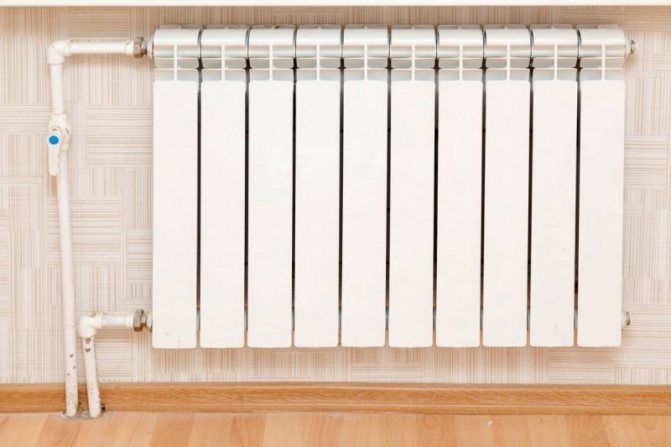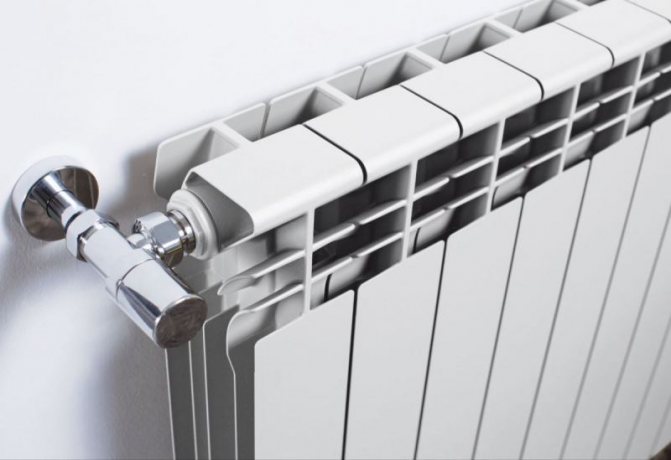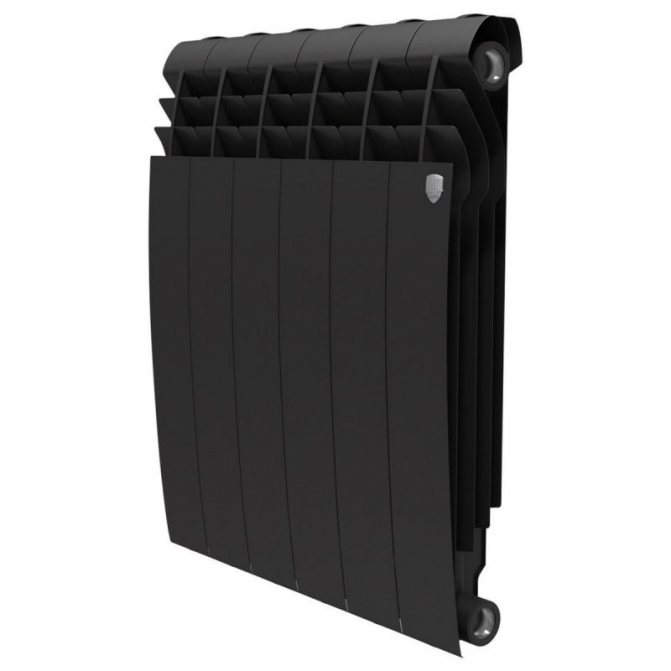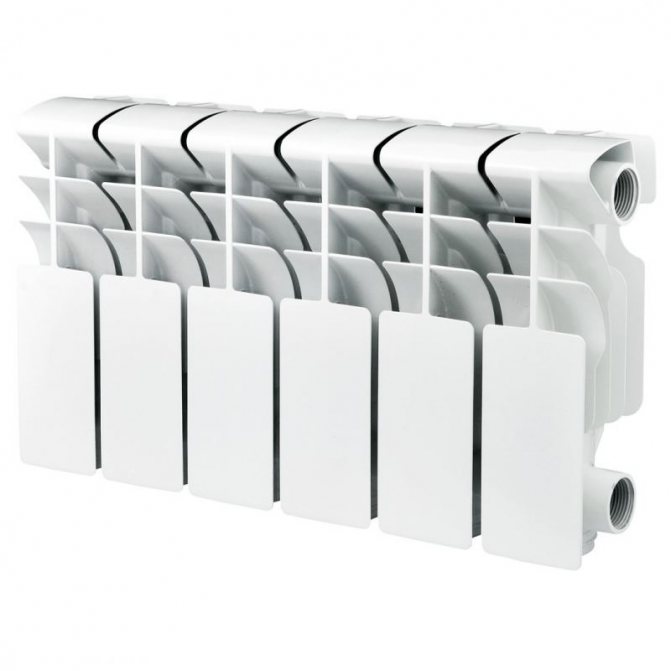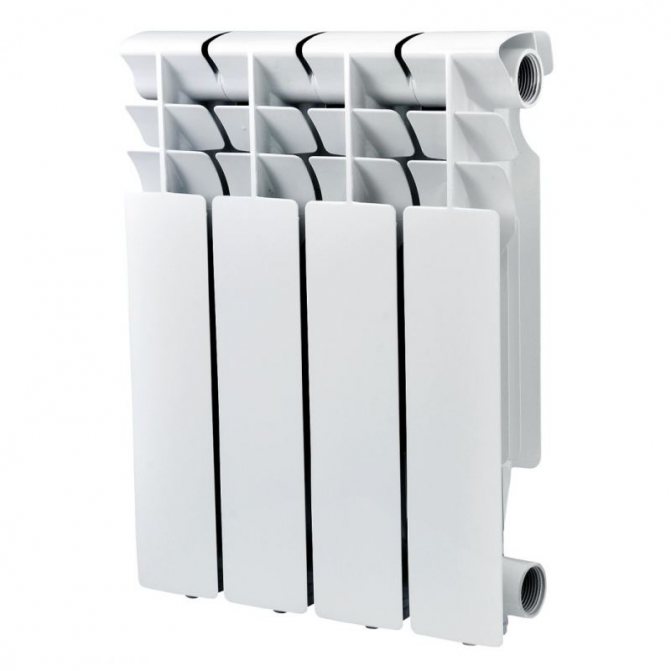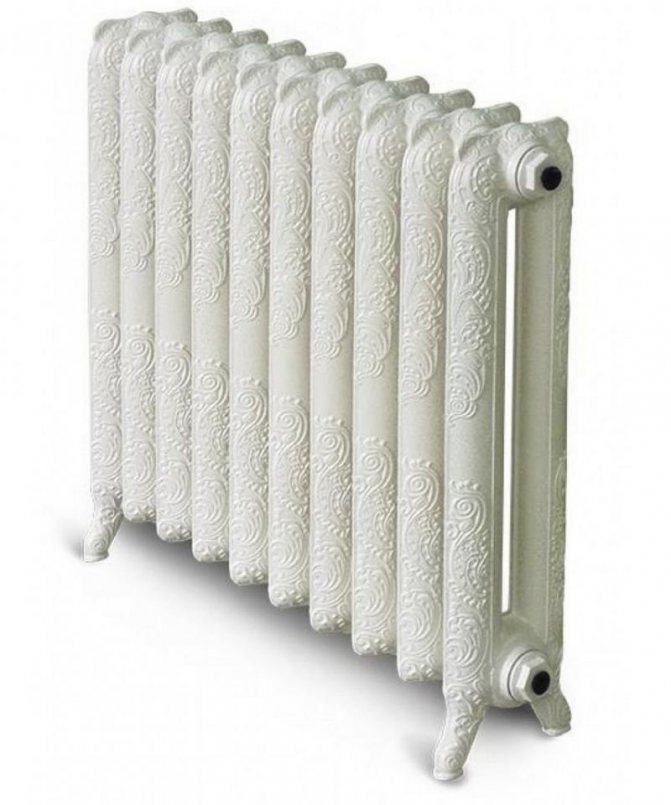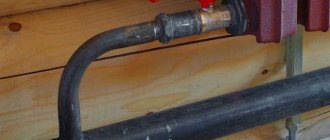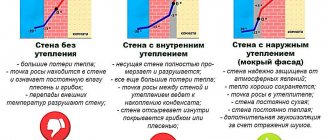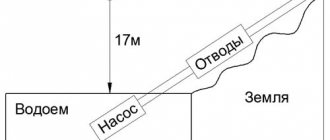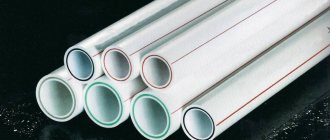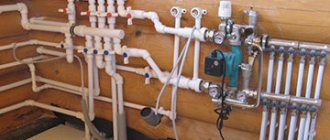Methods for determining the load
First, let's explain the meaning of the term. Heat load is the total amount of heat consumed by the heating system to heat the premises to the standard temperature during the coldest period. The value is calculated in units of energy - kilowatts, kilocalories (less often - kilojoules) and is denoted in the formulas by the Latin letter Q.
Knowing the heating load of a private house in general and the need of each room in particular, it is not difficult to choose a boiler, heaters and batteries of a water system in terms of power. How can this parameter be calculated:
- If the ceiling height does not reach 3 m, an enlarged calculation is made for the area of the heated rooms.
- With a ceiling height of 3 m or more, the heat consumption is calculated by the volume of the premises.
- Determination of heat loss through external fences and the cost of heating ventilation air in accordance with SNiP.
Note. In recent years, online calculators posted on the pages of various Internet resources have gained wide popularity. With their help, the determination of the amount of thermal energy is performed quickly and does not require additional instructions. The downside is that the reliability of the results must be checked, because the programs are written by people who are not heat engineers.
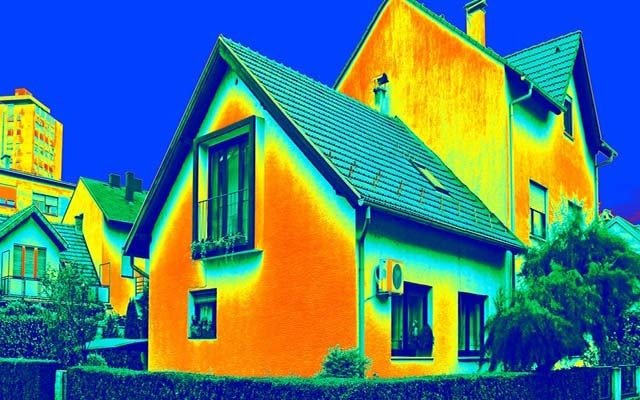
Photo of the building taken with a thermal imager
The first two calculation methods are based on the application of the specific thermal characteristic in relation to the heated area or the volume of the building. The algorithm is simple, it is used everywhere, but it gives very approximate results and does not take into account the degree of insulation of the cottage.
It is much more difficult to calculate the consumption of thermal energy according to SNiP, as design engineers do. You will have to collect a lot of reference data and work hard on the calculations, but the final numbers will reflect the real picture with an accuracy of 95%. We will try to simplify the methodology and make the calculation of the heating load as easy to understand as possible.
The need to calculate the thermal power of the heating system
The need to calculate the thermal energy required to heat rooms and utility rooms is due to the fact that it is necessary to determine the main characteristics of the system, depending on the individual characteristics of the designed facility, including:
- the purpose of the building and its type;
- the configuration of each room;
- number of residents;
- geographical location and region in which the settlement is located;
- other parameters.
The calculation of the required heating power is an important point, its result is used to calculate the parameters of the heating equipment that they plan to install:
- Selection of the boiler depending on its power
... The efficiency of the heating structure is determined by the correct choice of the heating unit. The boiler must have such a capacity to provide heating of all rooms in accordance with the needs of the people living in the house or apartment, even on the coldest winter days. At the same time, if the device has excess power, part of the generated energy will not be in demand, which means that a certain amount of money will be wasted. - The need to coordinate the connection to the main gas pipeline
... To connect to the gas network, a technical specification is required. To do this, an application is submitted to the appropriate service indicating the expected gas consumption for the year and an estimate of the heat capacity in total for all consumers. - Performing calculations for peripheral equipment
... Calculation of heat loads for heating is necessary to determine the length of the pipeline and the cross-section of pipes, the performance of the circulation pump, the type of batteries, etc.
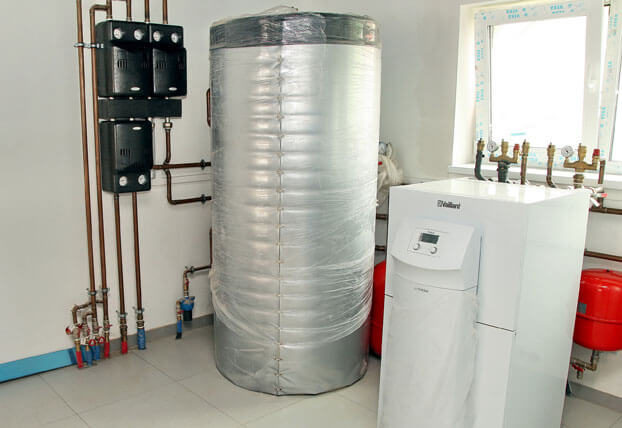

For example - a project of a one-story house of 100 m²
In order to clearly explain all the methods for determining the amount of heat energy, we suggest taking as an example a one-story house with a total area of 100 squares (by external measurement), shown in the drawing. Let's list the technical characteristics of the building:
- the region of construction is a zone of temperate climate (Minsk, Moscow);
- thickness of external fences - 38 cm, material - silicate brick;
- external wall insulation - polystyrene 100 mm thick, density - 25 kg / m³;
- floors - concrete on the ground, no basement;
- overlap - reinforced concrete slabs, insulated from the side of the cold attic with 10 cm foam;
- windows - standard metal-plastic for 2 glasses, size - 1500 x 1570 mm (h);
- entrance door - metal 100 x 200 cm, insulated from the inside with 20 mm extruded polystyrene foam.
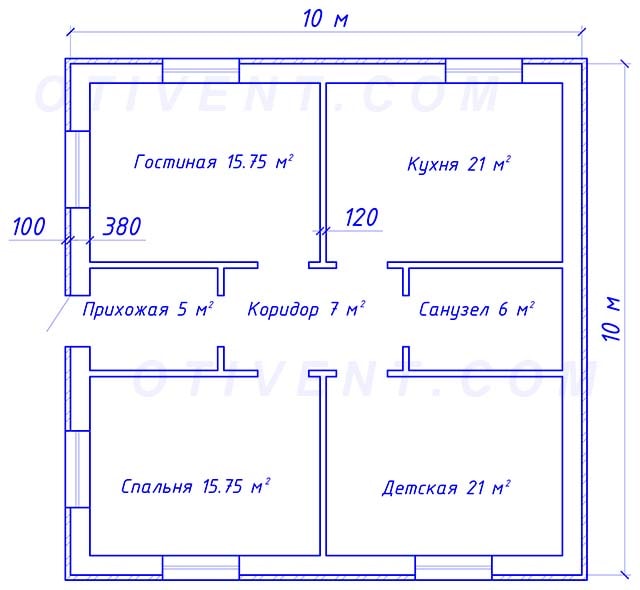

The cottage has half-brick interior partitions (12 cm), the boiler room is located in a separate building. The areas of the rooms are indicated in the drawing, the height of the ceilings will be taken depending on the explained calculation method - 2.8 or 3 m.
We calculate the heat consumption by quadrature
For an approximate estimate of the heating load, the simplest thermal calculation is usually used: the area of the building is taken by the outer dimensions and multiplied by 100 W. Accordingly, the heat consumption for a country house of 100 m² will be 10,000 W or 10 kW. The result allows you to select a boiler with a safety factor of 1.2-1.3, in this case, the unit's power is taken to be 12.5 kW.
We propose to perform more accurate calculations, taking into account the location of the rooms, the number of windows and the region of construction. So, with a ceiling height of up to 3 m, it is recommended to use the following formula:


The calculation is carried out for each room separately, then the results are summed up and multiplied by the regional coefficient. Explanation of the formula designations:
- Q is the required value of the load, W;
- Spom - square of the room, m²;
- q is the indicator of the specific thermal characteristics related to the area of the room, W / m2;
- k - coefficient taking into account the climate in the area of residence.
For reference. If a private house is located in a zone of temperate climate, the coefficient k is assumed to be equal to one. In the southern regions k = 0.7, in the northern regions the values of 1.5-2 are used.
In an approximate calculation according to the general quadrature, the indicator q = 100 W / m². This approach does not take into account the location of the rooms and the different number of light openings. The corridor inside the cottage will lose much less heat than a corner bedroom with windows of the same area. We propose to take the value of the specific thermal characteristic q as follows:
- for rooms with one outer wall and a window (or door) q = 100 W / m²;
- corner rooms with one light opening - 120 W / m²;
- the same, with two windows - 130 W / m².
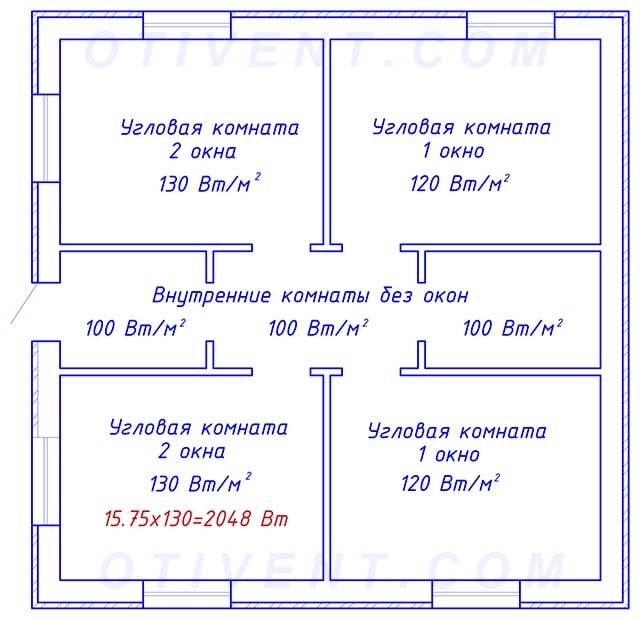

How to choose the correct q value is clearly shown on the building plan. For our example, the calculation looks like this:
Q = (15.75 x 130 + 21 x 120 + 5 x 100 + 7 x 100 + 6 x 100 + 15.75 x 130 + 21 x 120) x 1 = 10935 W ≈ 11 kW.
As you can see, the refined calculations gave a different result - in fact, 1 kW of heat energy more will be spent on heating a specific house of 100 m². The figure takes into account the heat consumption for heating the outside air that penetrates into the dwelling through openings and walls (infiltration).
Technical characteristics of cast iron radiators
The technical parameters of cast iron batteries are related to their reliability and endurance. The main characteristics of a cast iron radiator, like any heating device, are heat transfer and power. As a rule, manufacturers indicate the power of cast iron heating radiators for one section. The number of sections can be different. As a rule, from 3 to 6. But sometimes it can reach 12.The required number of sections is calculated separately for each apartment.
The number of sections depends on a number of factors:
- area of the room;
- room height;
- number of windows;
- floor;
- the presence of installed double-glazed windows;
- corner placement of the apartment.
The price per section is given for cast iron radiators, and may vary depending on the manufacturer. The heat dissipation of batteries depends on what kind of material they are made of. In this regard, cast iron is inferior to aluminum and steel.
Other technical parameters include:
- maximum working pressure - 9-12 bar;
- the maximum temperature of the coolant is 150 degrees;
- one section holds about 1.4 liters of water;
- the weight of one section is approximately 6 kg;
- section width 9.8 cm.
Such batteries should be installed with the distance between the radiator and the wall from 2 to 5 cm. The installation height above the floor should be at least 10 cm. If there are several windows in the room, batteries should be installed under each window. If the apartment is angular, it is recommended to carry out external wall insulation or to increase the number of sections.
It should be noted that cast iron batteries are often sold unpainted. In this regard, after purchase, they must be covered with a heat-resistant decorative compound, and must be stretched first.
Among domestic radiators, the model ms 140 can be distinguished. For cast iron heating radiators ms 140, the technical characteristics are given below:
- heat transfer of section МС 140 - 175 W;
- height - 59 cm;
- the radiator weighs 7 kg;
- the capacity of one section is 1.4 l;
- section depth is 14 cm;
- section power reaches 160 W;
- section width is 9.3 cm;
- the maximum temperature of the coolant is 130 degrees;
- maximum working pressure - 9 bar;
- the radiator has a sectional design;
- pressure test is 15 bar;
- the volume of water in one section is 1.35 liters;
- Heat-resistant rubber is used as the material for the intersection gaskets.
It should be noted that the ms 140 cast iron radiators are reliable and durable. And the price is quite affordable. This is what determines their demand in the domestic market.
Features of the choice of cast iron radiators
To choose which cast-iron heating radiators are best suited for your conditions, you must take into account the following technical parameters:
- heat transfer. Choose based on the size of the room;
- radiator weight;
- power;
- dimensions: width, height, depth.
To calculate the thermal power of a cast-iron battery, one must be guided by the following rule: for a room with 1 outer wall and 1 window, 1 kW of power per 10 sq.m. is needed. the area of the room; for a room with 2 outer walls and 1 window - 1.2 kW .; for heating a room with 2 outer walls and 2 windows - 1.3 kW.
If you decide to buy cast-iron heating radiators, you should also take into account the following nuances:
- if the ceiling is higher than 3 m, the required power will increase proportionally;
- if the room has windows with double-glazed windows, then the battery power can be reduced by 15%;
- if there are several windows in the apartment, then a radiator must be installed under each of them.
Modern market
Imported batteries have a perfectly smooth surface, they are of higher quality and look more aesthetically pleasing. True, their cost is high.
Among domestic counterparts, cast iron radiators konner can be distinguished, which are in good demand today. They are distinguished by a long service life, reliability, and fit perfectly into a modern interior. Cast iron radiators konner heating are produced in any configuration.
- How to pour water into an open and closed heating system?
- Popular floor-standing gas boiler of Russian production
- How to properly bleed air from a heating radiator?
- Expansion tank for closed-type heating: device and principle of operation
- Gas double-circuit wall-mounted boiler Navien: error codes in case of malfunction
Recommended reading
2016–2017 - Leading portal for heating. All rights reserved and protected by law
Copying of site materials is prohibited. Any copyright infringement entails legal liability. Contacts
Calculation of heat load by volume of rooms
When the distance between the floors and the ceiling reaches 3 m or more, the previous calculation cannot be used - the result will be incorrect. In such cases, the heating load is considered to be based on specific aggregated indicators of heat consumption per 1 m³ of the room volume.
The formula and calculation algorithm remain the same, only the area parameter S changes to volume - V:


Accordingly, another indicator of the specific consumption q is taken, referred to the cubic capacity of each room:
- a room inside a building or with one external wall and a window - 35 W / m³;
- corner room with one window - 40 W / m³;
- the same, with two light openings - 45 W / m³.
Note. Increasing and decreasing regional coefficients k are applied in the formula without changes.
Now, for example, let's determine the heating load of our cottage, taking the ceiling height equal to 3 m:
Q = (47.25 x 45 + 63 x 40 + 15 x 35 + 21 x 35 + 18 x 35 + 47.25 x 45 + 63 x 40) x 1 = 11182 W ≈ 11.2 kW.
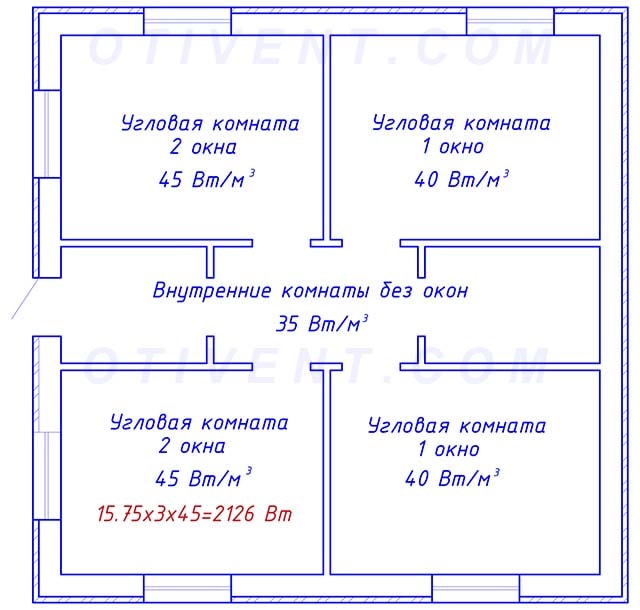

It is noticeable that the required heat output of the heating system has increased by 200 W compared to the previous calculation. If we take the height of the rooms 2.7-2.8 m and calculate the energy consumption through cubic capacity, then the figures will be approximately the same. That is, the method is quite applicable for the enlarged calculation of heat loss in rooms of any height.
Calculation of the diameter of heating pipes
Having decided on the number of radiators and their thermal power, you can proceed to the selection of the size of the supply pipes.
Before proceeding to calculating the diameter of pipes, it is worth touching on the topic of choosing the right material. In systems with high pressure, you will have to abandon the use of plastic pipes. For heating systems with a maximum temperature above 90 ° C, a steel or copper pipe is preferable. For systems with a coolant temperature below 80 ° C, you can choose a reinforced plastic or polymer pipe.
Heating systems for private houses are characterized by low pressure (0.15 - 0.3 MPa) and a coolant temperature not higher than 90 ° C. In this case, the use of inexpensive and reliable polymer pipes is justified (in comparison with metal ones).
In order for the required amount of heat to enter the radiator without delay, the diameters of the supply pipes of the radiators should be selected so that they correspond to the water flow required for each individual zone.
The calculation of the diameter of heating pipes is carried out according to the following formula:
D = √ (354 × (0.86 × Q ⁄ Δt °) ⁄ V)where:
D - pipeline diameter, mm.
Q - load on this section of the pipeline, kW.
Δt ° - the difference between the supply and return temperatures, ° C.
V - coolant speed, m⁄s.
Temperature difference (Δt °) a ten-section heating radiator between supply and return, depending on the flow rate, usually varies between 10 - 20 ° C.
The minimum value of the speed of the coolant (V) it is recommended to read 0.2 - 0.25 m⁄s. At lower speeds, the process of release of excess air contained in the coolant begins. The upper threshold for the speed of the coolant is 0.6 - 1.5 m⁄s. Such speeds avoid the occurrence of hydraulic noise in the pipelines. The optimal value of the speed of movement of the coolant is the range of 0.3 - 0.7 m⁄s.
For a more detailed analysis of the fluid velocity, it is necessary to take into account the pipe material and the roughness coefficient of the inner surface. So, for pipelines made of steel, the optimal flow rate is considered to be 0.25 - 0.5 m⁄s, for polymer and copper pipes - 0.25 - 0.7 m⁄s.
An example of calculating the diameter of heating pipes according to the specified parameters
Initial data:
- Room with an area of 20 m², with a ceiling height of 2.8 m.
- The house is brick-built, not insulated. The coefficient of heat loss of the structure is assumed to be 1.5.
- The room has one PVC window with double glazing.
- On the street -18 ° C, inside it is planned +20 ° C. The difference is 38 ° C.
Decision:
First of all, we determine the minimum required thermal power according to the previously considered formula Qt (kW × h) = V × ΔT × K ⁄ 860.
We get Qt = (20 m2 × 2.8 m) × 38 ° C × 1.5 ⁄ 860 = 3.71 kW × h = 3710 W × h.
Now you can go to the formula D = √ (354 × (0.86 × Q ⁄∆t °) ⁄ V). Δt ° - the difference in supply and return temperatures is assumed to be 20 ° С. V - the speed of the coolant is taken as 0.5 m⁄s.
We get D = √ (354 × (0.86 × 3.71 kW ⁄ 20 ° C) ⁄ 0.5 m⁄s) = 10.6 mm. In this case, it is recommended to select a pipe with an inner diameter of 12 mm.
Table of pipe diameters for heating a house
Table for calculating the diameter of a pipe for a two-pipe heating system with design parameters (Δt ° = 20 ° C, water density 971 kg ⁄ m³, specific heat capacity of water 4.2 kJ ⁄ (kg × ° C)):
| Internal pipe diameter, mm | Heat flow / water consumption | Flow speed, m / s | ||||||||||
| 0,1 | 0,2 | 0,3 | 0,4 | 0,5 | 0,6 | 0,7 | 0,8 | 0,9 | 1,0 | 1,1 | ||
| 8 | ΔW, W Q, kg ⁄ hour | 409 18 | 818 35 | 1226 53 | 1635 70 | 2044 88 | 2453 105 | 2861 123 | 3270 141 | 3679 158 | 4088 176 | 4496 193 |
| 10 | ΔW, W Q, kg ⁄ hour | 639 27 | 1277 55 | 1916 82 | 2555 110 | 3193 137 | 3832 165 | 4471 192 | 5109 220 | 5748 247 | 6387 275 | 7025 302 |
| 12 | ΔW, W Q, kg ⁄ hour | 920 40 | 1839 79 | 2759 119 | 3679 158 | 4598 198 | 5518 237 | 6438 277 | 728 316 | 8277 356 | 9197 395 | 10117 435 |
| 15 | ΔW, W Q, kg ⁄ hour | 1437 62 | 2874 124 | 4311 185 | 5748 247 | 7185 309 | 8622 371 | 10059 433 | 11496 494 | 12933 556 | 14370 618 | 15807 680 |
| 20 | ΔW, W Q, kg ⁄ hour | 2555 110 | 5109 220 | 7664 330 | 10219 439 | 12774 549 | 15328 659 | 17883 769 | 20438 879 | 22992 989 | 25547 1099 | 28102 1208 |
| 25 | ΔW, W Q, kg ⁄ hour | 3992 172 | 7983 343 | 11975 515 | 15967 687 | 19959 858 | 23950 1030 | 27942 1202 | 31934 1373 | 35926 1545 | 39917 1716 | 43909 1999 |
| 32 | ΔW, W Q, kg ⁄ hour | 6540 281 | 13080 562 | 19620 844 | 26160 1125 | 32700 1406 | 39240 1687 | 45780 1969 | 53220 2250 | 58860 2534 | 65401 2812 | 71941 3093 |
| 40 | ΔW, W Q, kg ⁄ hour | 10219 439 | 20438 879 | 30656 1318 | 40875 1758 | 51094 2197 | 61343 2636 | 71532 3076 | 81751 3515 | 91969 3955 | 102188 4394 | 112407 4834 |
| 50 | ΔW, W Q, kg ⁄ hour | 15967 687 | 31934 1373 | 47901 2060 | 63868 2746 | 79835 3433 | 95802 4120 | 111768 4806 | 127735 5493 | 143702 6179 | 159669 6866 | 175636 7552 |
| 70 | ΔW, W Q, kg ⁄ hour | 31295 1346 | 62590 2691 | 93885 4037 | 125181 5383 | 156476 6729 | 187771 8074 | 219066 9420 | 250361 10766 | 281656 12111 | 312952 13457 | 344247 14803 |
| 100 | ΔW, W Q, kg ⁄ hour | 63868 2746 | 127735 5493 | 191603 8239 | 255471 10985 | 319338 13732 | 383206 16478 | 447074 19224 | 510941 21971 | 574809 24717 | 638677 27463 | 702544 30210 |
Based on the previous example and this table, we will select the diameter of the heating pipe. We know that the minimum required heat output for a 20 m² room is 3710 W × h. We look at the table and look for the closest value that corresponds to the calculated heat flow and the optimal fluid velocity. We get the inner diameter of the pipe 12 mm, which, at a speed of movement of the coolant of 0.5 m ⁄ s, will provide a flow rate of 198 kg ⁄ hour.
How to take advantage of the results of calculations
Knowing the building's heat demand, a homeowner can:
- clearly select the power of heating equipment for heating a cottage;
- dial the required number of radiator sections;
- determine the required thickness of the insulation and insulate the building;
- find out the flow rate of the coolant at any part of the system and, if necessary, perform a hydraulic calculation of the pipelines;
- find out the average daily and monthly heat consumption.
The last point is of particular interest. We found the value of the heat load for 1 hour, but it can be recalculated for a longer period and the estimated fuel consumption - gas, wood or pellets - can be calculated.
What you need to consider when calculating
Calculation of heating radiators
Be sure to take into account:
- The material from which the heating battery is made.
- Its size.
- The number of windows and doors in the room.
- The material from which the house is built.
- The side of the world in which the apartment or room is located.
- The presence of thermal insulation of the building.
- Type of piping routing.
And this is only a small part of what must be taken into account when calculating the power of a heating radiator. Do not forget about the regional location of the house, as well as the average outdoor temperature.
There are two ways to calculate the heat dissipation of a radiator:
- Regular - using paper, pen and calculator. The calculation formula is known, and it uses the main indicators - the heat output of one section and the area of the heated room. Coefficients are also added - decreasing and increasing, which depend on the previously described criteria.
- Using an online calculator. It is an easy-to-use computer program that loads specific data about the dimensions and construction of a house. It gives a fairly accurate indicator, which is taken as the basis for the design of the heating system.
For a simple layman, both options are not the easiest way to determine the heat transfer of a heating battery. But there is another method, for which a simple formula is used - 1 kW per 10 m² of area. That is, to heat a room with an area of 10 square meters, you will need only 1 kilowatt of thermal energy.Knowing the heat transfer rate of one section of a heating radiator, you can accurately calculate how many sections need to be installed in a particular room.
Let's look at a few examples of how to correctly carry out such a calculation. Different types of radiators have a large size range, depending on the center distance. This is the dimension between the axes of the lower and upper manifold. For the bulk of heating batteries, this indicator is either 350 mm or 500 mm. There are other parameters, but these are more common than others.
This is the first thing. Second, there are several types of heating devices made of various metals on the market. Each metal has its own heat transfer, and this will have to be taken into account when calculating. By the way, everyone decides for himself which one to choose and install a radiator in his home.


